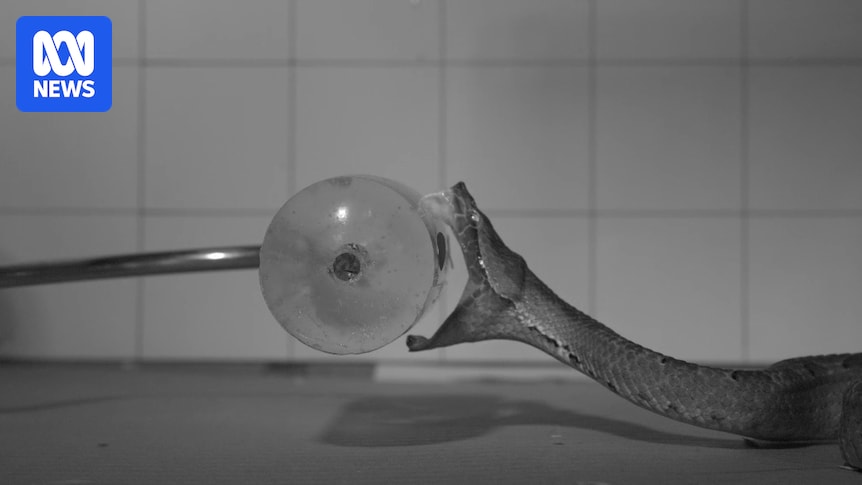
Venomous snakes are renowned for their rapid strikes, capable of reaching prey or humans in mere milliseconds. However, a groundbreaking study utilizing high-speed cameras has unveiled the intricate techniques these serpents use to deliver their deadly venom. Conducted by a team of Australian researchers, this study is the largest of its kind, comparing the striking methods of venomous snakes under controlled conditions.
Published in the Journal of Experimental Biology, the study was led by Silke Cleuren, an evolutionary biologist at Monash University. Cleuren traveled to Venomworld in Paris, a facility where snakes from around the globe are bred for venom extraction for medical purposes, to gather her scaly subjects. The research involved recording the bites of 36 snake species from the viper, elapid, and colubrid families, including the Australian rough-scaled death adder, the western diamondback rattlesnake, and the west African carpet viper.
Insights into Viper Strikes
Vipers, known for their lightning-fast strikes, were a focal point of the study. According to Alistair Evans, a study co-author and evolutionary morphologist at Monash University, enticing these snakes to strike required minimal effort. Researchers presented each snake with a warmed-up cylinder of medical gel, designed to mimic prey, and captured the strikes using high-speed video cameras.
“On average, prey was reached within just 100 milliseconds — about three times faster than the blink of a human eye,” said Professor Evans.
The fastest, the blunt-nosed or Levantine viper, reached its prey in just over 20 milliseconds. Vipers possess hinged fangs, allowing them to adjust their bite if the initial strike is unsatisfactory. The study noted that vipers dominated the sample, comprising 31 of the 36 species analyzed.
Timothy Jackson, a snake venom researcher at the University of Melbourne, emphasized the significance of this analysis. “This study significantly improves our knowledge,” he stated, while also highlighting the challenges of expanding such research to other snake types, particularly in Australia.
Elapids: The Fast Strikers
Elapids, including many of Australia’s venomous snakes, have fangs positioned at the front of their mouths. The Australian rough-scaled death adder was one of four elapids studied, demonstrating remarkable speed by reaching its prey in about 30 milliseconds and moving at up to 2.21 meters per second.
“Death adders strike extraordinarily quickly and are very much in the viper range,” noted Dr. Jackson. “In terms of reaching maximum velocity, death adders were the second fastest species in the entire study.”
Despite their shorter fangs compared to vipers, elapids compensate by creeping closer to their prey and striking repeatedly to inject venom. Dr. Jackson acknowledged that while much of the study confirmed existing knowledge, the quantitative analysis provided essential validation.
Unique Techniques of Colubrids
The study also included the mangrove or gold-ringed cat snake from Southeast Asia, the sole representative of the Colubridae family. With fangs located towards the back of its mouth, this snake exhibited a distinct biting style. The snake’s maximum gape was achieved sooner and maintained longer than other species, allowing for effective venom transfer through crescent-shaped cuts.
“One of the interesting findings was how different families of snakes use their venom in different ways,” said Professor Evans.
While the study was limited by the species available in Paris, it provides a foundational blueprint for further research. Dr. Jackson expressed hope that the study’s methodology could be adapted for broader application and inspire future studies worldwide.
The implications of this research extend beyond academic curiosity, offering potential advancements in medical applications and a deeper understanding of snake behavior. As researchers continue to explore the fascinating world of venomous snakes, high-speed technology remains a crucial tool in uncovering the secrets of these ancient predators.





